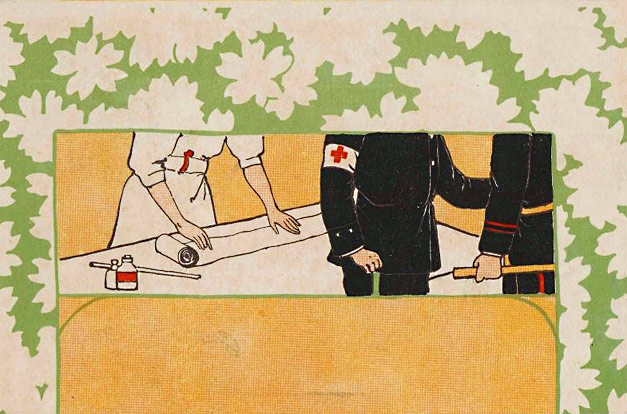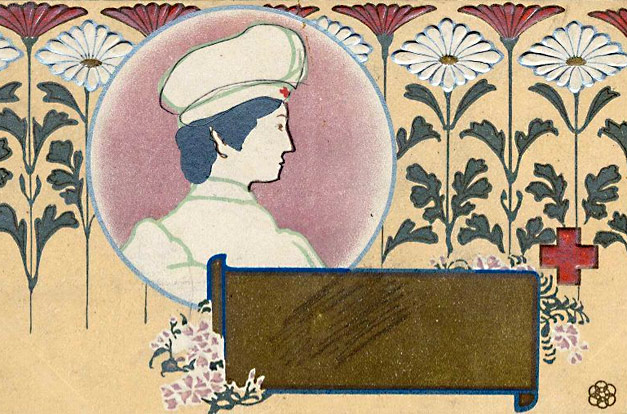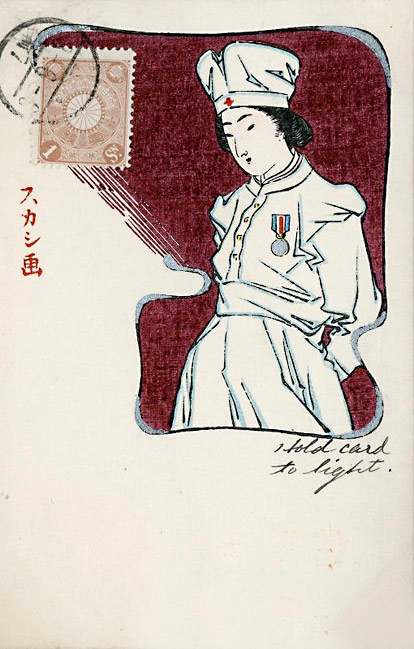Admiring the Nurses
The picture postcards of the Russo-Japanese War ushered in a new age of celebrity on the Japanese side, in which heroes were accompanied by heroines. The latter almost always tended to be Red Cross nurses, who played many symbolic roles. The Red Cross affiliation highlighted Japan’s new “internationalism.” Depictions of Japanese nurses providing aid and solace to wounded Russian prisoners was intended to demonstrate modern Japan's “humanitarianism.” And, predictably, the nurses were invariably good-looking. In this latter regard, they amounted to female icons who bridged the cult of female beauties (bijin) famous in traditional woodblock prints and the more western-style “pin-ups” who would soon emerge from popular modern entertainments.
“Red Cross Nurse” by Kaburaki Kiyokata
[2002.953]
“Nurse Holding a Branch of Camellia” (with hand-written message)
[2002.3182]

“Nurse and Soldiers”
[2002.3597]
“Nurses” (from the series “Thousand Contemporary Figures”)
[2002.3599]
“Nurse Holding a Cherry Blossom Branch” (with hand-written message)
[2002.3593]
“Nurse Looking Over a Wounded Soldier”
[2002.1572]
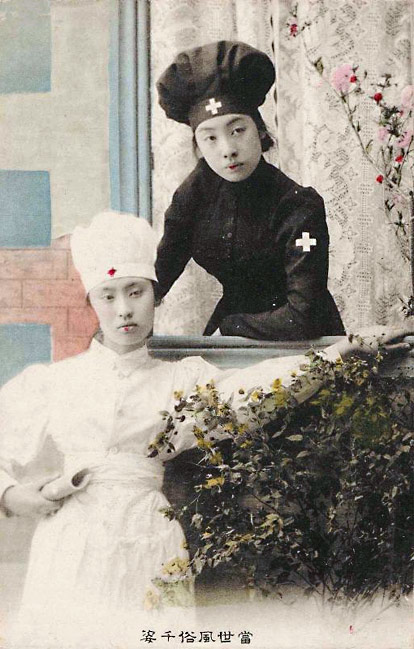
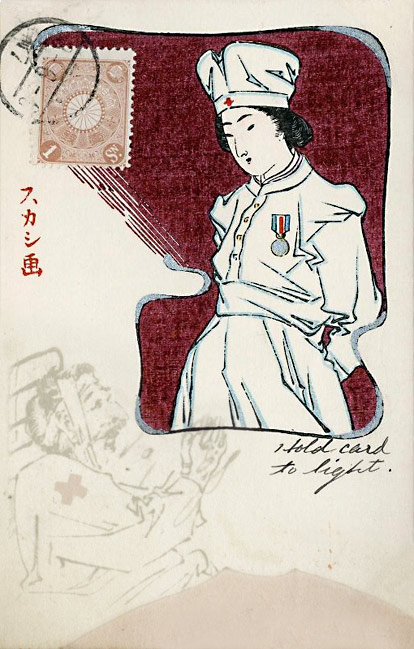
“Nurse Looking Over a Wounded Soldier”
[2002.1572b]
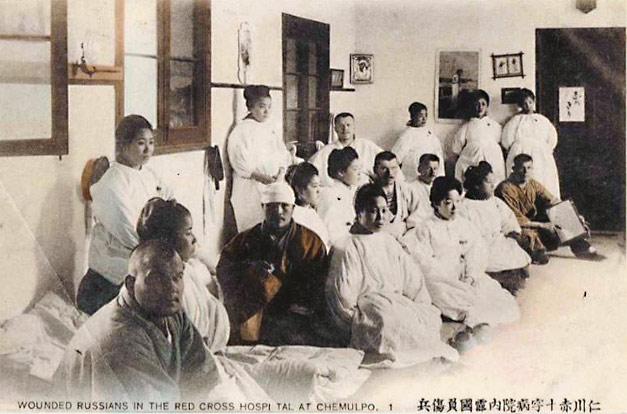
“Nurse from Tokyo Nichinichi shinbun”
[2002.3600]
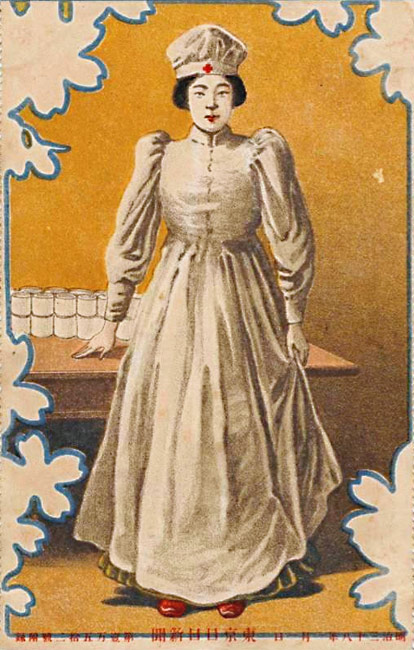
“Wounded Russians in the Red Cross Hospital at Chemulpo”
[2002.2965]
